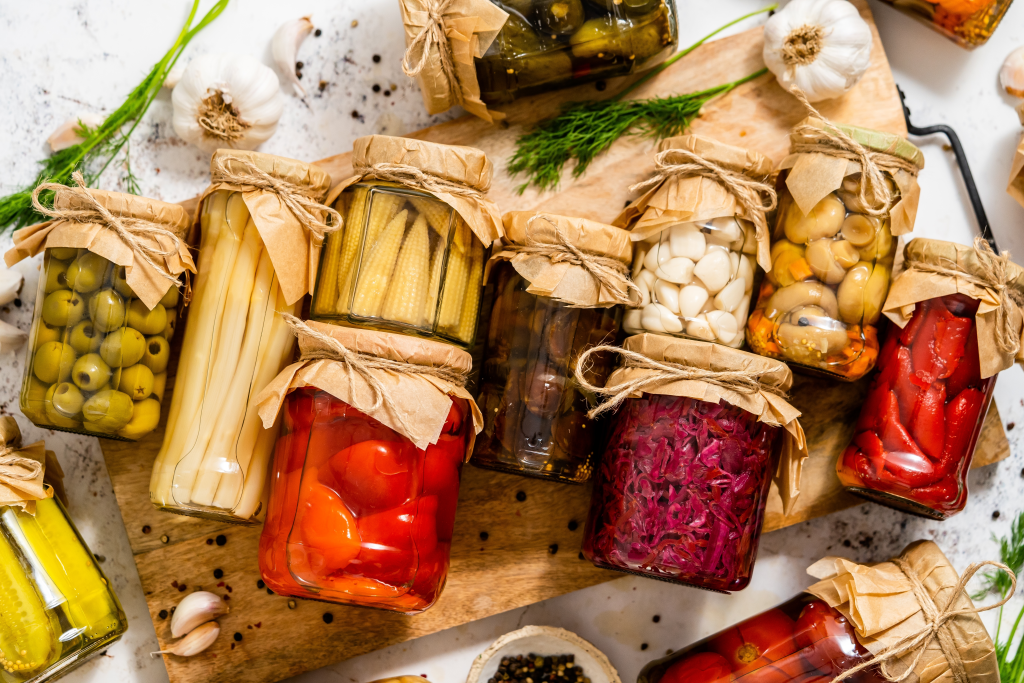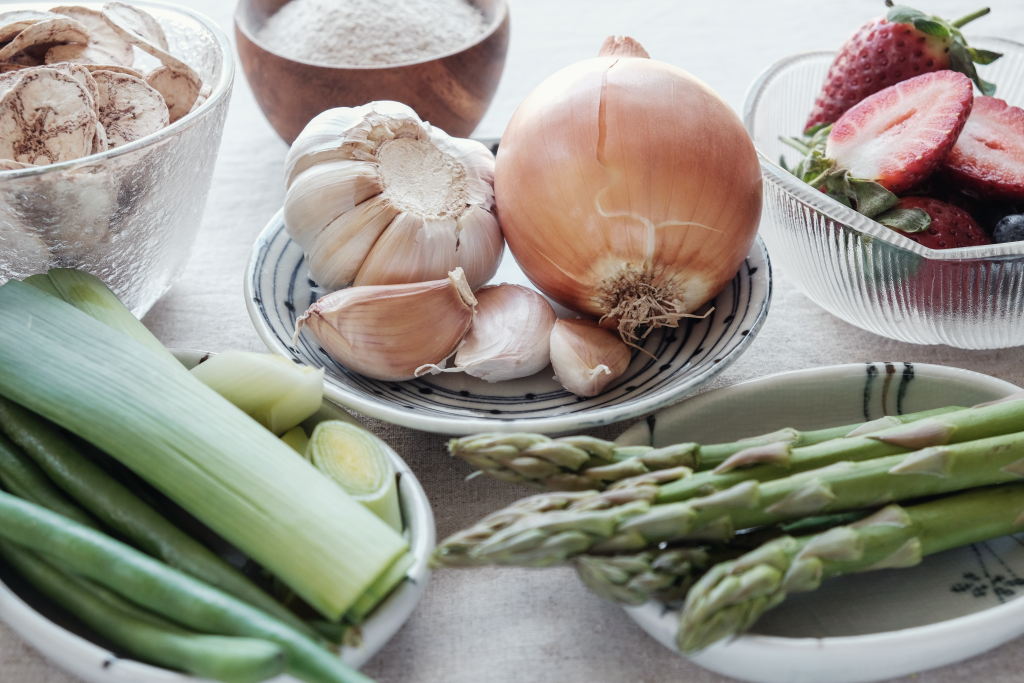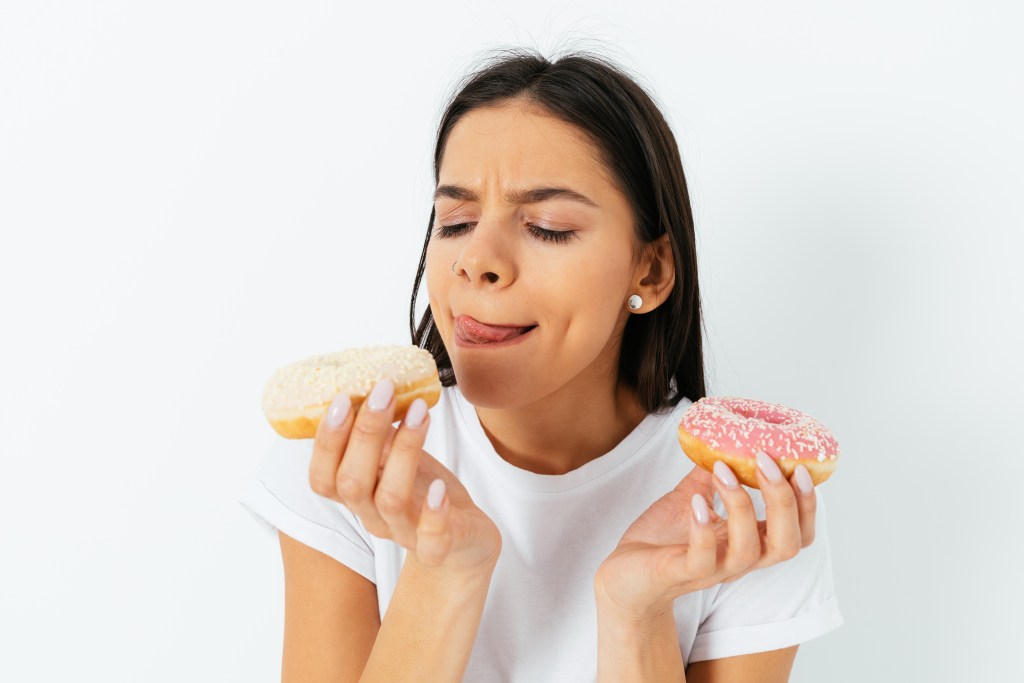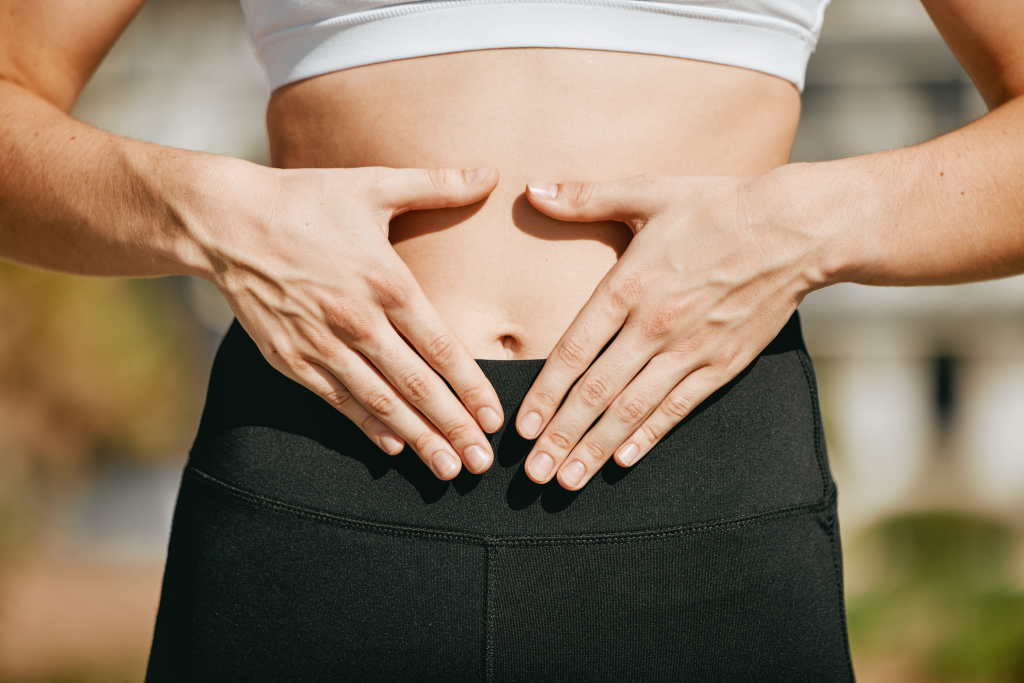Beneficial gut microbes help regulate appetite and food intake, and an imbalanced microbiome can lead to food cravings and excessive sugar consumption.
Learn how to use foods rich in probiotics for sugar cravings and discover the importance of fermented foods and prebiotics for maintaining a diverse gut microflora.
The connection between gut health and sugar cravings
Your gut bacteria play a significant role in balancing hormones that regulate hunger, satiety, and eating behavior.
Certain probiotic bacteria ferment dietary fibers, which release large amounts of short-chain fatty acids (SCFAs). SCFAs have been found to impact the secretion of several satiation hormones, including glucagon-like peptide 1 (GLP-1), peptide YY (PYY), and ghrelin.
These hormones communicate with the central nervous system and send signals to the brain that trigger or inhibit cravings for certain foods.
Research published in Signal Transduction and Targeted Therapy confirms the role of gut bacteria in regulating food intake and concludes, “The gut microbiota has the ability to regulate the host’s appetite, food preferences, and feeding behaviors through satiety pathways.”1
A lack of healthy gut microbes can lead to an overgrowth of potentially bad bacteria that can alter the production of satiation hormone, which is linked to increased cravings for sugary foods.
“Poor gut health can contribute to obesity and metabolic imbalances,” explains Dr. Berg. “Promoting a healthy gut flora with probiotic-rich foods can help stop sugar cravings and promote a healthy body weight.”
Interestingly, consuming too much sugar and processed foods can alter the composition of the intestinal microflora and exacerbate food cravings, which creates a vicious cycle of excess sugar consumption and imbalanced gut microbes.
Watch the video below to learn why you are craving sugar and how to stop sugar addiction.
Three benefits of probiotics for sugar cravings
The benefits of probiotics for sugar cravings extend beyond their role in regulating satiety hormones.
Probiotic-rich foods help restore and maintain a diverse microflora, promote metabolic health, and enhance emotional well-being, which are crucial factors influencing hunger, appetite, and food cravings.
Here are three benefits of probiotics for sugar cravings.
1. Better blood sugar regulation
Fluctuating blood sugar levels and insulin resistance are the primary causes of sugar cravings.
Gut bacteria produce SCFAs, which have been associated with enhanced insulin sensitivity and improved blood sugar balance.
SCFAs can also help regulate the release of certain hormones needed to manage blood sugar balance, which explains why consuming foods rich in probiotics can lead to fewer cravings.
A study published in The Journal of Diabetes & Metabolic Disorders found that certain gut bacteria, including Bifidobacteria and Lactobacillus strains, are particularly beneficial for curbing sugar cravings and promoting metabolic health.2
2. Promote mental wellness
Evidence published in Bioessays suggests that maintaining a diverse microflora promotes balanced mood regulation and can help reduce emotional eating, often linked to craving palatable foods such as sugary treats.3
Gut microbes interact with the central nervous system and have been found to enhance the production and activity of serotonin and dopamine. These critical neurotransmitters modulate moods and regulate reward circuits in the brain, which is closely linked to eating behavior and cravings.
3. Support balanced inflammatory responses
Beneficial gut bacteria help your digestive system function optimally and strengthen the gut barrier, which is crucial in preventing potentially harmful substances from entering the bloodstream.
Poor gut health can impair the gut barrier and cause inflammation in the gastrointestinal tract, which can lead to dysregulated hormone production and food cravings.
Many people try to curb sugar cravings by using artificial sweeteners or maltodextrin. However, these sugar alternatives can significantly disrupt the gut barrier functions and cause hormonal imbalances, which increases the risk of food cravings and excessive sugar intake.
If you occasionally want to enjoy sweet treats, opt for natural sweeteners like stevia and monk fruit instead.

How to use probiotic-rich foods to reduce sugar cravings
Because of their role in hormonal balance, mood regulation, and gut health, incorporating foods rich in probiotics can give your body the boost it needs to curb sugar cravings.
Fermentation creates an ideal environment for healthy bacteria to thrive which explains why foods including sauerkraut, miso, natto, pickles, kefir, and kombucha are some of the best dietary sources of probiotic microbes.
Regularly consuming fermented foods promotes a diverse gut microbiome and can help reduce cravings, support smoother digestion, and enhance emotional well-being.
Over time, this shift in gut health may recalibrate your taste preferences, making you less inclined to reach for sweet foods that disrupt blood sugar balance, contribute to weight gain, and feed harmful gut bacteria.
Additionally, many probiotic foods contain natural acids and organic compounds that help stabilize blood sugar, reducing energy fluctuations that can trigger powerful sugar cravings.

Support your microbiome with prebiotics
Prebiotics are a group of non-digestible fibers that serve as food for gut microbes and contribute to a diverse microbiome.
Certain bacteria ferment non-digestible fiber into SCFAs, which are the primary fuel for the beneficial microorganisms residing in your gut.
SCFAs are crucial to maintaining a healthy microbiome and have been linked to overall digestive health, strong immune defenses, and a lower risk of insulin resistance and type 2 diabetes.
Regularly consuming prebiotics helps good bacteria in your intestines to thrive and flourish and enhances the health benefits of consuming probiotic-rich foods.
Here are some of the best prebiotic dietary sources:

Other causes of sugar cravings
Eating behavior and food preferences are influenced by a complex metabolic and hormonal interplay, and sugar cravings can be triggered by several physiological and psychological factors.
Here are four common causes of sugar cravings.
1. Excessive consumption of sugars and carbs
Regular consumption of sugary foods and refined carbohydrates can lead to rapid blood sugar fluctuations, which triggers sugar cravings in order to balance blood glucose levels.
2. Stress
Stress and anxiety can trigger cravings for sugary foods to cope with negative feelings.
In addition, stress causes the release of cortisol, which increases appetite and often leads to cravings for high-calorie foods such as sugary snacks and processed foods.
3. Lack of sleep
A study published in the American Journal of Lifestyle Medicine found that poor sleep quality was significantly related to higher sugar intake.4
It’s believed that inadequate sleep causes several hormonal imbalances that can contribute to increased appetite and cravings for energy-dense, sugary foods.
4. Hormonal changes
Hormonal fluctuations can profoundly impact appetite control and food preferences, which explains why some women crave chocolate during their menstrual cycle, pregnancy, or menopause.

Key takeaways
A healthy gut microbiota supports balanced satiety hormones, and regularly consuming foods rich in probiotics for sugar cravings can help curb sweet cravings, reduce overall sugar intake, and support better metabolic health.
Regularly consuming pre- and probiotic-rich foods such as sauerkraut, kimchi, kefir, and kombucha supports microbial gut diversity and helps reduce cravings for sweet and sugary foods.
FAQ
1. Can you use probiotics for sugar cravings?
Yes, foods rich in probiotic bacteria promote balanced levels of satiety hormones, including glucagon-like peptide-1 and ghrelin, which play a crucial role in appetite regulation.
Lack of beneficial gut bacteria can result in hormonal imbalances linked to increased appetite and sugar cravings.
2. Which probiotic strains reduce sugar cravings?
Lactobacillus and Bifidobacteria are among the most effective probiotic strains for sugar cravings and are commonly found in fermented food sources like yogurt, kefir, sauerkraut, and kimchi.
3. How do I get rid of gut bacteria that cause sugar cravings?
Regularly consuming pre- and probiotic-rich foods promotes a diverse gut microbiome, which plays a crucial role in eliminating bad bacteria linked to sugar cravings.
4. Does sugar affect your microbiome?
Regular sugar consumption can negatively impact the diversity and balance of your microbiome, which can lead to the overgrowth of potentially harmful bacteria and a decrease in the number of beneficial microbes.
An imbalance in microflora can worsen sugar cravings, which creates a vicious cycle of excessive sugar intake and diminishing gut health.







